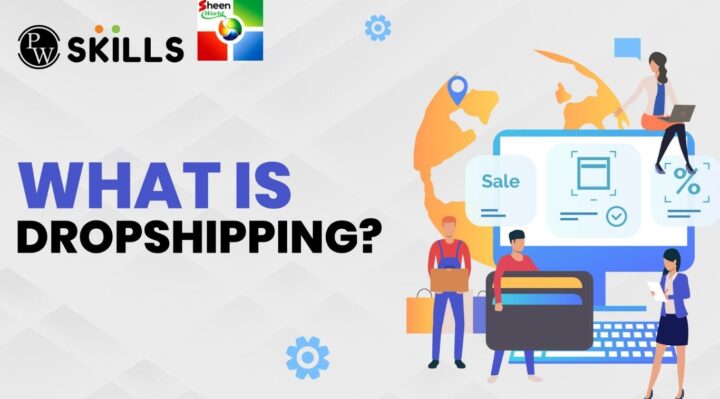
In the ever-evolving landscape of e-commerce, one business model that has gained significant popularity is dropshipping. This unique approach allows entrepreneurs to run an online store without the need for inventory or upfront investment in products. But what is dropshipping, exactly? In this comprehensive guide, we will explore the ins and outs of dropshipping, its advantages and disadvantages, how to get started, and tips for success.
H1: Understanding Dropshipping
H2: Definition of Dropshipping
Dropshipping is a retail fulfillment method where a store does not keep the products it sells in stock. Instead, when a store sells a product, it purchases the item from a third party—usually a wholesaler or manufacturer—and has it shipped directly to the customer. This means that the seller doesn’t have to handle the product directly.
H3: How Dropshipping Works
- Customer Orders: A customer places an order on the dropshipping store.
- Order Forwarding: The retailer forwards the order details to the supplier.
- Supplier Ships: The supplier packages and ships the product directly to the customer.
- Profit Margin: The retailer earns a profit by marking up the price of the product above the supplier’s cost.
H4: The Evolution of Dropshipping
Dropshipping has its roots in traditional retail, but the rise of the internet and e-commerce platforms has transformed it into a viable business model. It allows anyone with an internet connection to start a business with minimal risk.
H1: Advantages of Dropshipping
H2: Low Startup Costs
One of the primary benefits of dropshipping is that it requires very little upfront investment. Entrepreneurs do not need to purchase inventory, making it a lower-risk option compared to traditional retail models.
H3: Wide Product Selection
With dropshipping, retailers can offer a vast array of products without the constraints of inventory space. This flexibility allows for easy experimentation with different niches and products.
H4: Location Independence
Dropshipping businesses can be managed from anywhere with an internet connection. This flexibility enables entrepreneurs to work from home or while traveling.
H1: Disadvantages of Dropshipping
H2: Lower Profit Margins
While the low startup costs are attractive, dropshipping often comes with lower profit margins compared to bulk buying and reselling. Retailers must carefully price their products to remain competitive while still making a profit.
H3: Inventory Issues
Since dropshippers rely on suppliers for inventory, they may face challenges such as stock shortages or delays. This can lead to customer dissatisfaction and lost sales.
H4: Shipping Complexities
Managing shipping can be complicated, especially if a retailer works with multiple suppliers. Different shipping times and costs can create confusion for customers.
H1: How to Get Started with Dropshipping
H2: Market Research
Before launching a dropshipping business, it’s essential to conduct thorough market research. Identify a niche that interests you and has demand. Tools like Google Trends, keyword research tools, and competitor analysis can provide valuable insights.
H3: Choose a Dropshipping Platform
Select an e-commerce platform that supports dropshipping. Popular options include:
- Shopify: User-friendly and integrates easily with dropshipping apps.
- WooCommerce: A customizable option for WordPress users.
- BigCommerce: Scalable solution for growing businesses.
H4: Find Reliable Suppliers
Partnering with reliable suppliers is crucial for the success of your dropshipping business. Consider using platforms like:
- AliExpress: A popular choice for dropshippers with a wide range of products.
- Oberlo: A Shopify app that connects stores with suppliers.
- SaleHoo: A directory of vetted suppliers and wholesalers.
H1: Setting Up Your Dropshipping Store
H2: Designing Your Website
Your website is the face of your dropshipping business. Invest time in creating a user-friendly, visually appealing site. Consider the following elements:
- Responsive Design: Ensure your website works well on mobile devices.
- Easy Navigation: Create clear categories and a search function to help customers find products easily.
- Compelling Product Pages: Use high-quality images and detailed descriptions to entice buyers.
H3: Setting Up Payment Gateways
Choose reliable payment gateways to facilitate transactions. Options include:
- PayPal: A widely used, secure payment option.
- Stripe: Offers customizable payment solutions for e-commerce businesses.
- Square: A user-friendly option for accepting credit card payments online.
H4: Implementing Marketing Strategies
Once your store is set up, you’ll need to attract customers. Consider these marketing strategies:
- Social Media Marketing: Use platforms like Facebook and Instagram to reach your target audience.
- Content Marketing: Create valuable content (blogs, videos) that drives traffic to your site.
- Email Marketing: Build an email list to keep customers informed about promotions and new products.
H1: Dropshipping Best Practices
H2: Focus on Customer Service
Excellent customer service is vital for building trust and repeat business. Respond promptly to inquiries and address any issues swiftly.
H3: Monitor Analytics
Use analytics tools to track website performance, customer behavior, and sales trends. This data can help you make informed decisions about your business.
H4: Continuously Optimize
Regularly review and optimize your product offerings, website design, and marketing strategies to improve conversion rates and customer satisfaction.
H1: Common Myths About Dropshipping
H2: Dropshipping Is a Get-Rich-Quick Scheme
Many people mistakenly believe that dropshipping guarantees instant wealth. In reality, it requires hard work, dedication, and strategic planning to succeed.
H3: You Don’t Need to Market
While dropshipping reduces inventory risks, it doesn’t eliminate the need for marketing. Successful dropshipping businesses invest in marketing to attract and retain customers.
H4: All Dropshipping Suppliers Are Reliable
Not all suppliers are created equal. It’s crucial to vet suppliers thoroughly to ensure they provide quality products and reliable shipping.
H1: The Future of Dropshipping
H2: Evolving Market Trends
As e-commerce continues to grow, dropshipping will likely evolve. Trends to watch include:
- Sustainability: More consumers are seeking eco-friendly products, prompting dropshippers to adapt.
- Personalization: Tailoring products and marketing to individual customer preferences can enhance user experience.
- Automation: Leveraging technology to automate processes, such as inventory management and customer service, will become increasingly important.
H3: Integration of Technology
Advancements in technology, such as artificial intelligence and machine learning, will play a significant role in optimizing dropshipping operations.
H4: Global Expansion
As international shipping becomes more streamlined, dropshippers may have more opportunities to reach global markets, expanding their customer base.
H1: Conclusion
In conclusion, what is dropshipping is a multifaceted topic that encompasses a unique e-commerce model with its advantages and challenges. For aspiring entrepreneurs, dropshipping offers an accessible entry point into the world of online retail.
By understanding the fundamentals of dropshipping, conducting thorough research, and applying best practices, you can build a successful dropshipping business. As the e-commerce landscape continues to evolve, staying informed and adapting to changes will be key to long-term success.
This comprehensive guide provides a deep dive into what dropshipping is, covering everything from its definition and workings to how to get started and best practices for success. Whether you’re considering starting your own dropshipping business or simply curious about the model, this article serves as a valuable resource for understanding the ins and outs of dropshipping.



